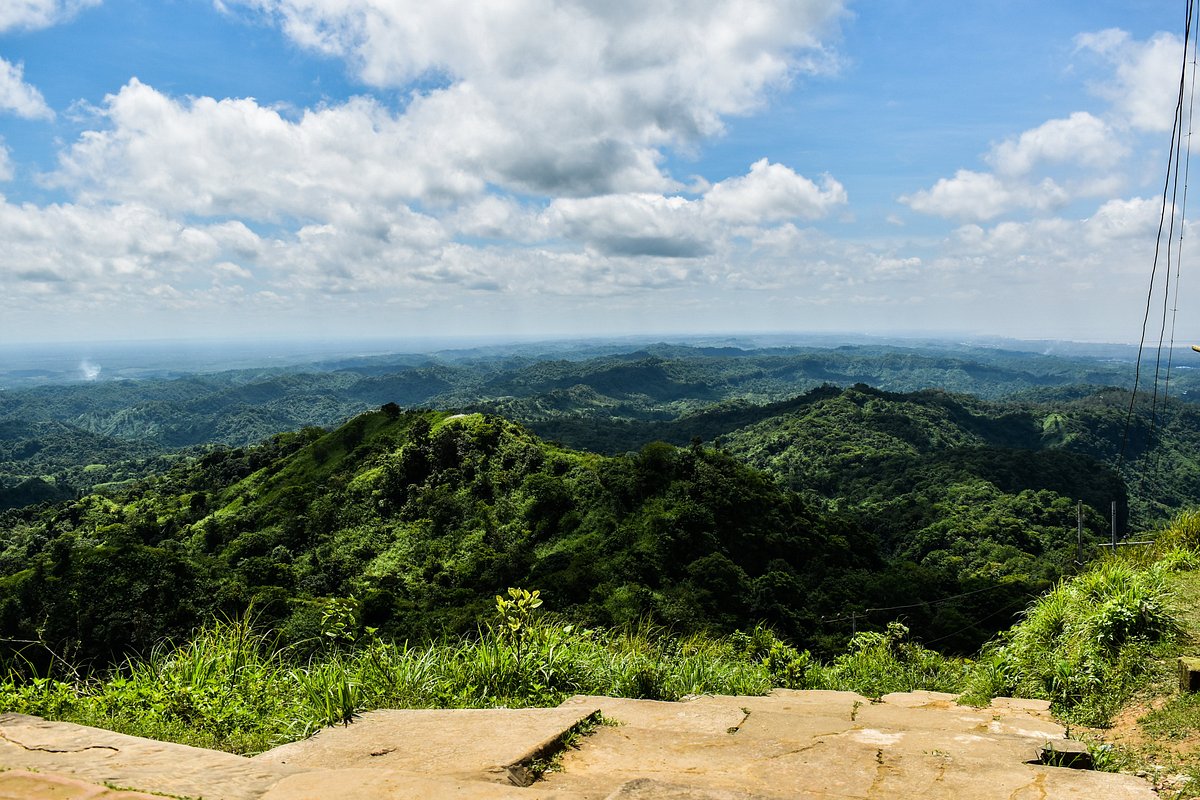Nestled in the hills of Chittagong, Bangladesh, Chandranath Temple is one of the 51 Shakti Peethas of the Indian subcontinent. According to ancient legends, during Lord Shiva’s grief-stricken journey carrying Sati Devi’s body, different parts of her body fell at various locations, forming sacred Shakti Peethas. At Chandranath, it is believed that Maa Sati’s right arm fell, giving the temple immense spiritual and religious significance.
The temple is revered not only for its mythological importance but also for its serene hilltop setting, offering devotees a peaceful atmosphere for prayer, meditation, and connection with the divine feminine energy.
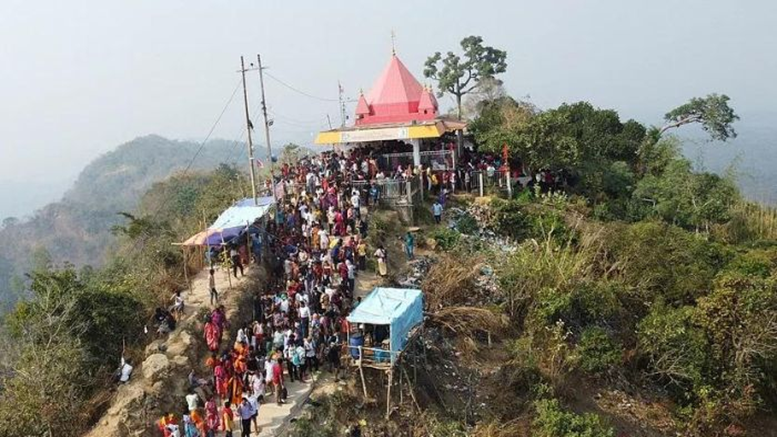
Mythological Significance
The legend of Chandranath Temple is intertwined with the story of Sati and Shiva:
- Sati Devi self-immolated after her father, Daksha, insulted Lord Shiva during a grand sacrificial ritual.
- Lord Shiva, in deep sorrow, carried her body across the universe.
- Lord Vishnu intervened, using his Sudarshan Chakra to cut the body into parts, which fell at different locations, creating the 51 Shakti Peethas.
At Chandranath Temple, it is believed that Maa Sati’s right arm fell, symbolizing:
- Strength and action: The right arm represents the goddess’s power to act, protect, and grant strength to her devotees.
- Divine protection: Worshipping at this site is believed to bring courage, protection, and spiritual fortitude.
- Spiritual empowerment: Devotees gain energy and resolve to overcome obstacles in their lives.
This connection with the right arm of Maa Sati makes Chandranath Temple a center for seeking blessings related to strength, courage, and empowerment.
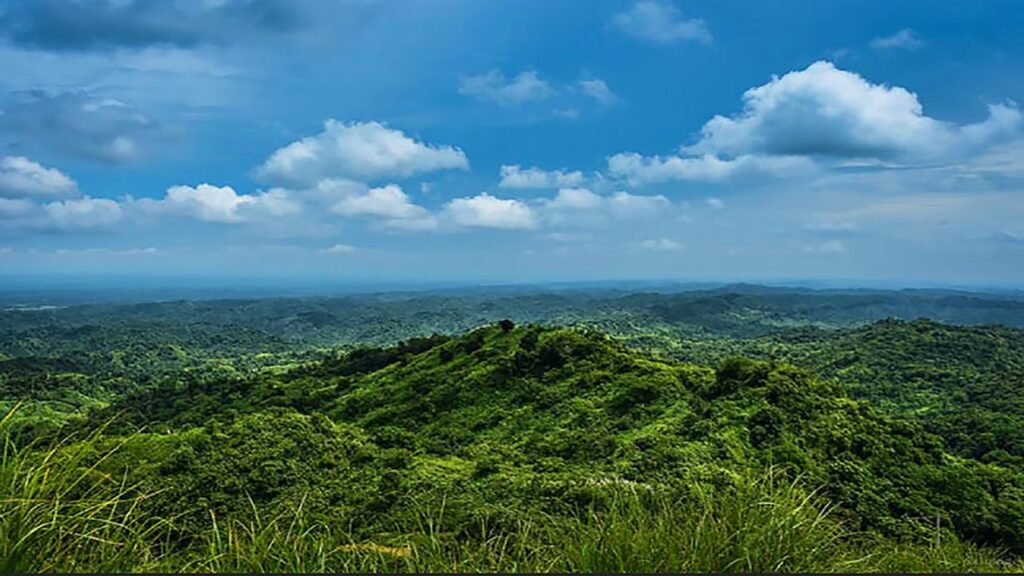
Historical and Cultural Background
Chandranath Temple has a rich historical legacy, known for centuries as a Shakti Peetha:
- Mentioned in ancient Hindu texts and local traditions, the temple has served as a spiritual hub for Shakta worship.
- The temple has witnessed patronage from local rulers and devotees who maintained its religious and cultural significance.
- Over time, Chandranath became a center for pilgrimages, drawing devotees not only from Bangladesh but also from neighboring regions of India.
The temple is an important cultural landmark, blending mythology, history, and the spiritual traditions of the region.
Temple Location and Architecture
Perched on the Chandranath Hills, the temple is surrounded by lush greenery and panoramic views of Chittagong. Its architecture reflects traditional Hindu hilltop temple design, emphasizing devotion and spiritual immersion rather than grandeur:
- Sanctum Sanctorum: Houses the idol of Maa Chandranath, representing the goddess’s right arm. Devotees focus on this representation to seek strength and blessings.
- Temple Courtyard: Provides space for meditation, rituals, and circumambulation.
- Hilly Terrain: Pilgrims experience a spiritual journey as they ascend the hills, enhancing the connection with nature and the goddess’s energy.
The temple layout emphasizes direct interaction with the divine, allowing devotees to immerse themselves fully in worship and reflection.
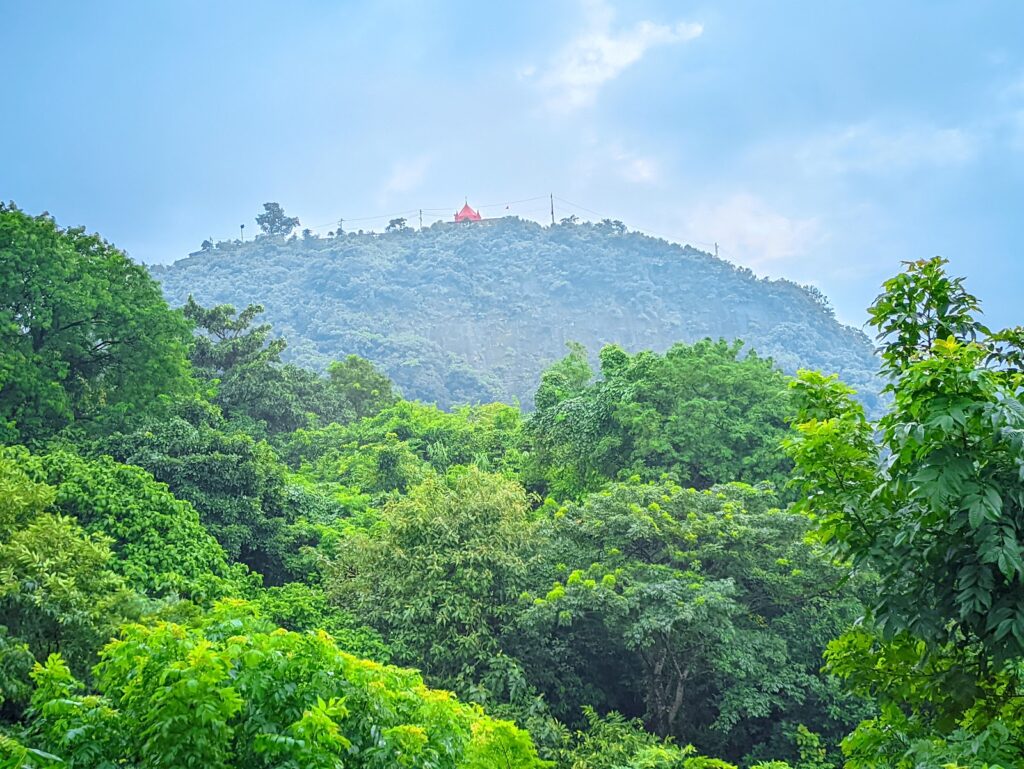
Rituals and Worship Practices
Daily rituals at Chandranath Temple focus on strength, protection, and divine blessings through devotion to Maa Sati’s right arm:
Daily Worship
- Morning and evening aarti, offering prayers for strength, courage, and protection.
- Devotees present flowers, incense, and sweets at the sanctum.
- Circumambulation and chanting of mantras enhance spiritual energy.
Festivals and Special Observances
- Navratri Celebrations: The temple sees large gatherings during Chaitra and Sharad Navratri. Special rituals focus on the goddess’s right arm, invoking her protective power.
- Other Regional Festivals: Local celebrations include devotional singing, fire offerings, and storytelling of Maa Sati’s legends.
Devotee Practices
- Many pilgrims observe fasting and meditation.
- Devotees pray for strength in personal and professional life, protection from harm, and spiritual growth.
- The temple’s serene surroundings help deepen the connection with Maa Sati’s energy.
Spiritual Significance of the Right Arm
The right arm of Maa Sati symbolizes:
- Strength and Empowerment: The ability to face challenges and obstacles in life.
- Divine Action: The goddess acts through her devotees, guiding them toward righteousness.
- Protection and Courage: Worship at the temple is believed to shield devotees from harm.
Many pilgrims report feeling energized, courageous, and spiritually empowered after offering prayers at Chandranath Temple. The symbolism of the right arm reinforces the connection between devotion and personal strength.
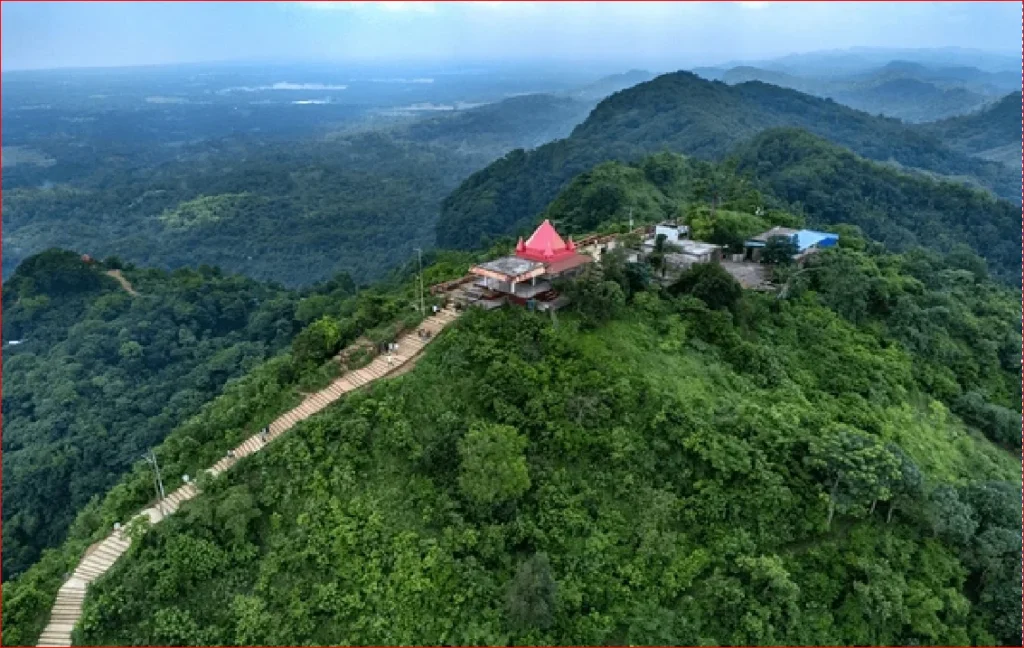
Pilgrimage Experience
A visit to Chandranath Temple is not only a spiritual journey but also a cultural and natural experience:
- Spiritual Upliftment: Meditation and prayers at the temple provide inner peace and divine connection.
- Scenic Surroundings: The hilltop location offers panoramic views and opportunities for reflection.
- Cultural Immersion: Pilgrims engage with local customs, rituals, and traditions, gaining a deeper understanding of regional spirituality.
Devotees often include visits to nearby temples and sacred sites, creating a holistic pilgrimage circuit in the Chittagong region.
Nearby Attractions and Pilgrimage Circuits
Pilgrims visiting Chandranath Temple can explore several nearby sacred and cultural sites:
- Sitakunda Hills: Known for its natural beauty and spiritual significance, offering trekking opportunities.
- Buddhist Monasteries in Chittagong: Provides a cultural and spiritual contrast, enriching the pilgrimage experience.
- Other Shakti Peethas in Bangladesh: Devotees often combine visits to multiple sites for a comprehensive Shakti circuit.
- Local Markets and Cultural Hubs: Offer a glimpse into the traditions and lifestyle of the region, enhancing the journey.
These attractions allow pilgrims to blend devotion, exploration, and cultural experiences, creating a holistic spiritual journey.
FAQs for Chandranath Temple
1. Why is Chandranath Temple famous?
Chandranath Temple is a revered Shakti Peetha, known for its spiritual energy and scenic location in the hills of Bangladesh.
2. Where is Chandranath Temple located?
It is located on Chandranath Hill near Chittaranjan town, West Bengal, overlooking the surrounding valleys.
3. What is worshipped at Chandranath Temple?
The temple worships Goddess Chandranath (Shakti), symbolizing divine feminine power and protection.
4. What are the temple timings?
The temple generally opens from 6:00 AM to 6:00 PM, but timings can vary during festivals.
5. Is photography allowed inside Chandranath Temple?
Photography is restricted inside the sanctum, but allowed in surrounding areas.
6. What is the significance of Chandranath as a Shakti Peetha?
It is believed that a part of Goddess Sati fell here, making it a sacred site for worship and spiritual energy.
7. How can I reach Chandranath Temple?
The temple is accessible by road from nearby towns in West Bengal; trekking is required for the hilltop shrine.
8. Are there any special rituals at Chandranath Temple?
Yes, devotees perform aarti, offerings, and special pujas during festivals like Navratri.
9. Is there accommodation near Chandranath Temple?
Basic guesthouses and lodges are available in nearby towns for pilgrims.
10. What is the best time to visit Chandranath Temple?
October to March is ideal, avoiding monsoon rains and enjoying pleasant weather for trekking and sightseeing.

